The AnandTech Coffee Lake Review: Initial Numbers on the Core i7-8700K and Core i5-8400
by Ian Cutress on October 5, 2017 9:00 AM EST- Posted in
- CPUs
- Intel
- Core i5
- Core i7
- Core i3
- 14nm
- Coffee Lake
- 14++
- Hex-Core
- Hyperthreading
Rise of the Tomb Raider
One of the newest games in the gaming benchmark suite is Rise of the Tomb Raider (RoTR), developed by Crystal Dynamics, and the sequel to the popular Tomb Raider which was loved for its automated benchmark mode. But don’t let that fool you: the benchmark mode in RoTR is very much different this time around.
Visually, the previous Tomb Raider pushed realism to the limits with features such as TressFX, and the new RoTR goes one stage further when it comes to graphics fidelity. This leads to an interesting set of requirements in hardware: some sections of the game are typically GPU limited, whereas others with a lot of long-range physics can be CPU limited, depending on how the driver can translate the DirectX 12 workload.
Where the old game had one benchmark scene, the new game has three different scenes with different requirements. These are three scenes designed to be taken from the game, but it has been noted that scenes like 2-Prophet shown in the benchmark can be the most CPU limited elements of that entire level, and the scene shown is only a small portion of that level. Because of this, we report the results for each scene on each graphics card separately.
Graphics options for RoTR are similar to other games in this type, offering some presets or allowing the user to configure texture quality, anisotropic filter levels, shadow quality, soft shadows, occlusion, depth of field, tessellation, reflections, foliage, bloom, and features like PureHair which updates on TressFX in the previous game.
Again, we test at 1920x1080 and 4K using our native 4K displays. At 1080p we run the High preset, while at 4K we use the Medium preset which still takes a sizable hit in frame rate.
It is worth noting that RoTR is a little different to our other benchmarks in that it keeps its graphics settings in the registry rather than a standard ini file, and unlike the previous TR game the benchmark cannot be called from the command-line. Nonetheless we scripted around these issues to automate the benchmark four times and parse the results. From the frame time data, we report the averages, 99th percentiles, and our time under analysis.
All of our benchmark results can also be found in our benchmark engine, Bench.
#1 Geothermal Valley Spine of the Mountain
MSI GTX 1080 Gaming 8G Performance
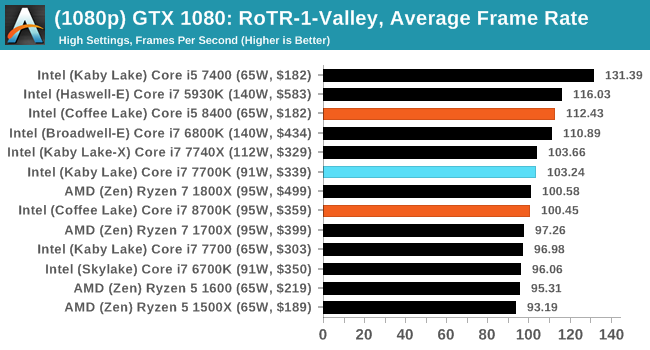
1080p


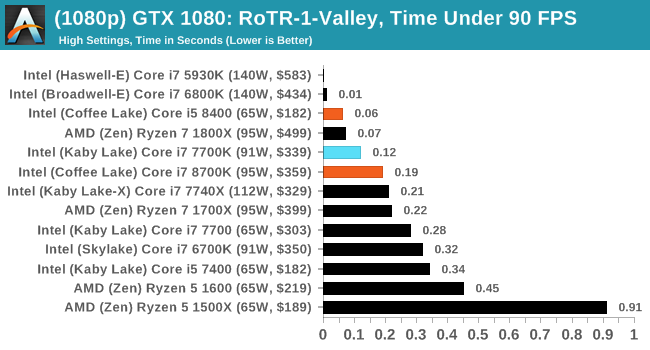
4K
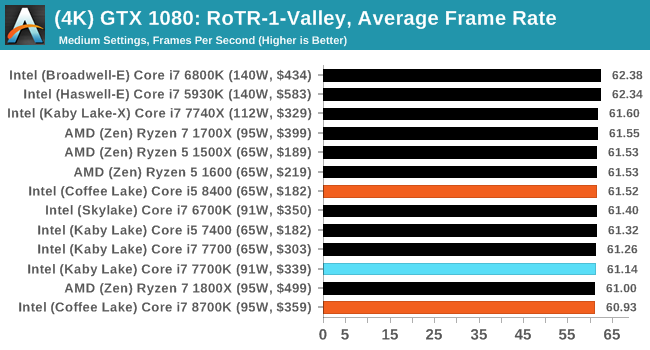
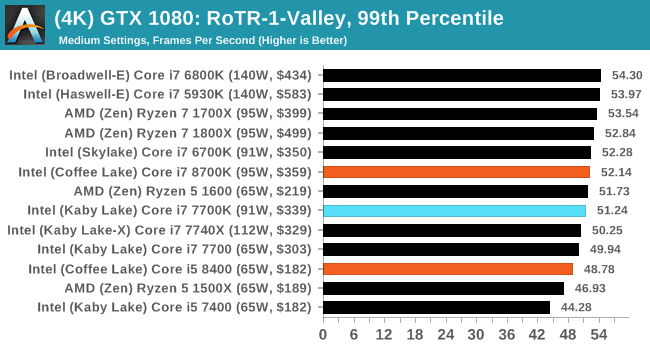
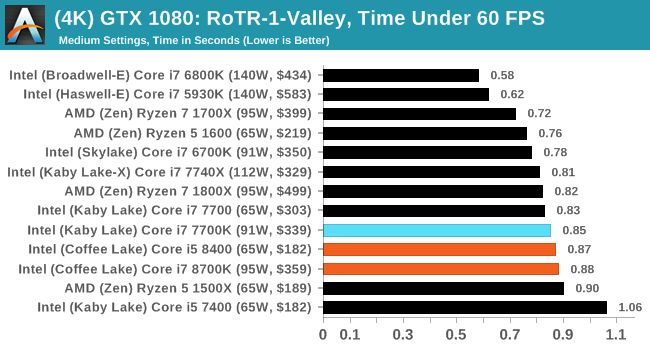
#2 Prophet’s Tomb
MSI GTX 1080 Gaming 8G Performance

1080p

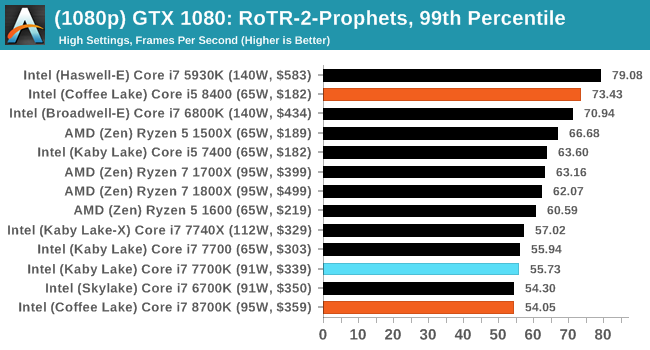

4K
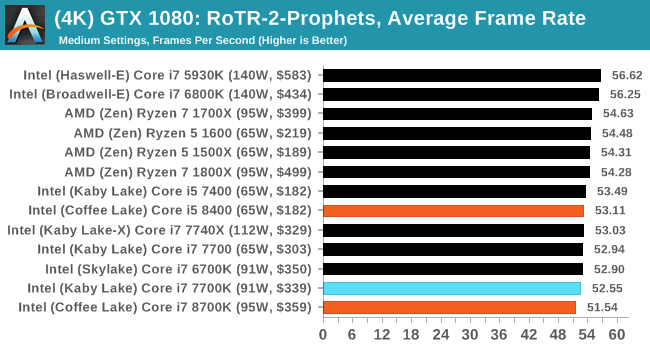
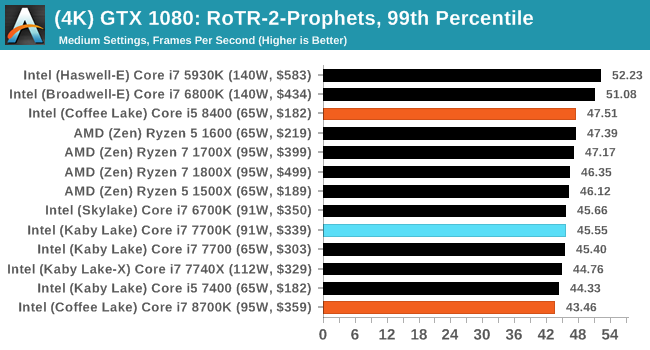
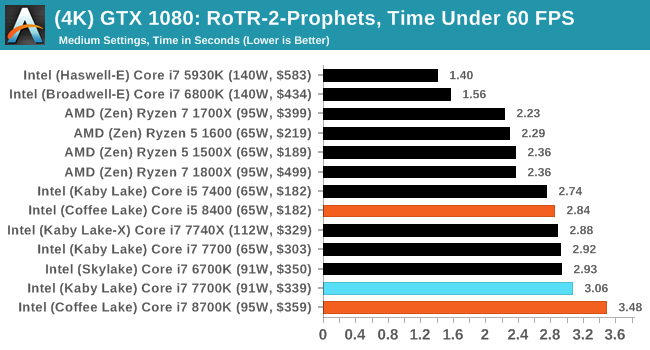
#3 Spine of the Mountain GeoThermal Valley
MSI GTX 1080 Gaming 8G Performance
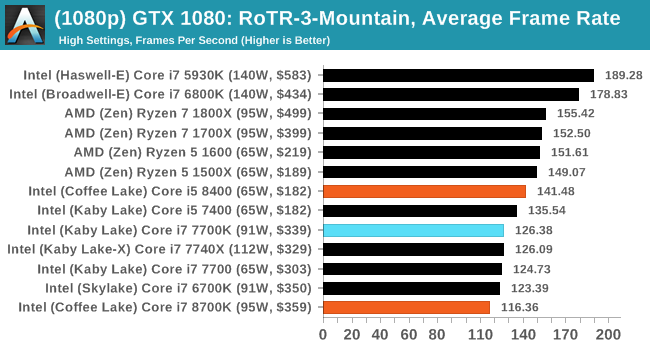
1080p

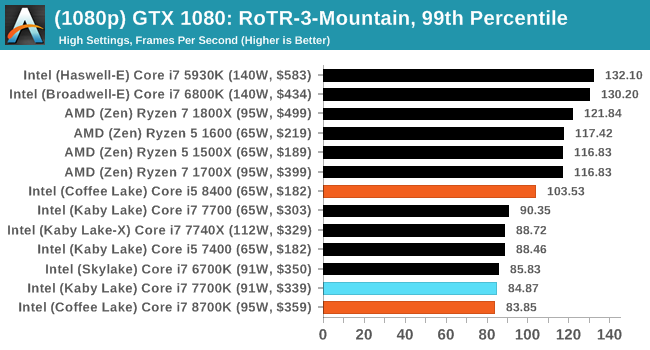
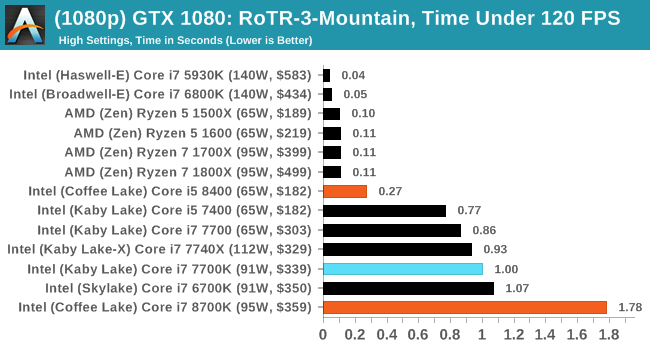
4K
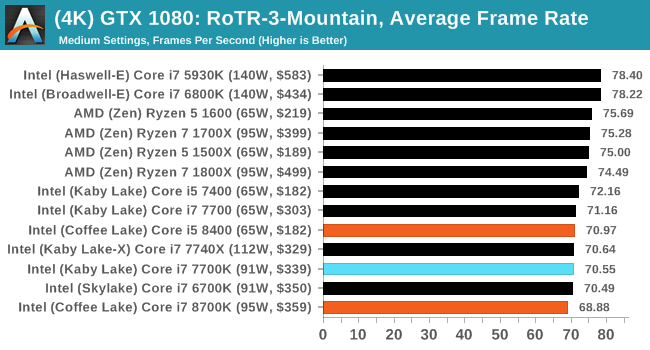
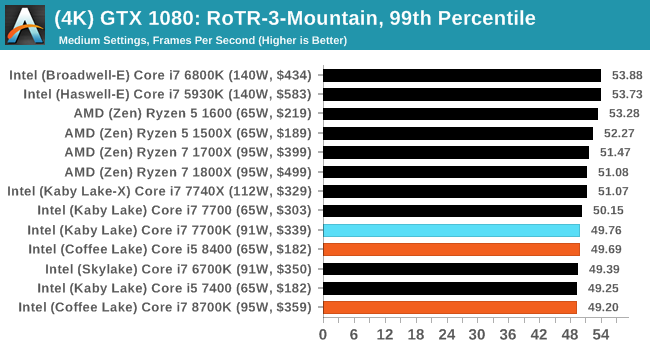
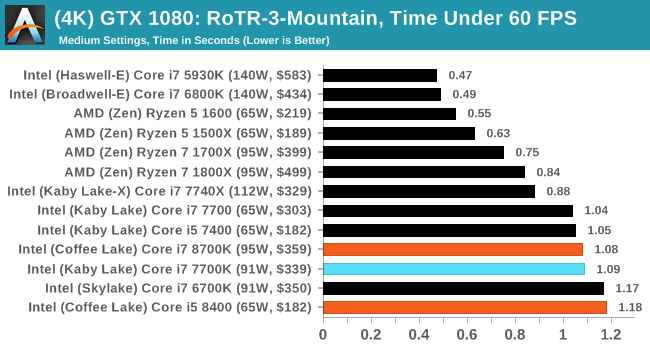
The 8700K did not seem to play nicely with RoTR. We'll go back and check this.


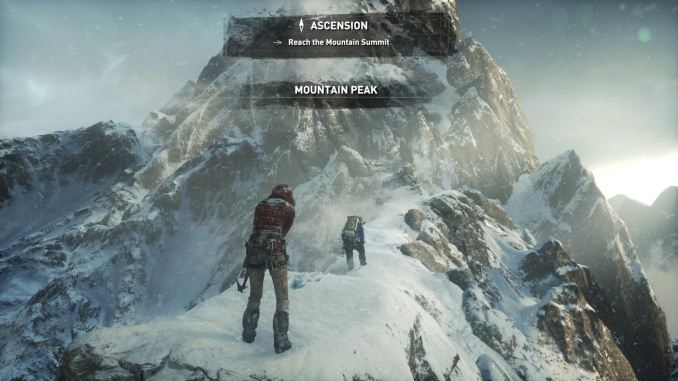












222 Comments
View All Comments
watzupken - Thursday, October 5, 2017 - link
I don't know how you define as "best" for review graph. The point is that we are seeing new 6 cores solution from Intel, so very logically, people will be trying to compare apples with apples, i.e. 6 core solutions from both camps. So omitting the results from 1600 actually looks more than meets the eye to me, especially when you folks previously did a R5 1600X review.Ian Cutress - Thursday, October 5, 2017 - link
I'm adding the R5 1600 data. It'll take 10-15 minutes, it's not a quick process. brbwatzupken - Thursday, October 5, 2017 - link
Thank you Ian. Please do add the data for R5 1600/X. From what I read elsewhere, it appears there is good competition between the Core i5 and R5 1600/X series.Ian Cutress - Thursday, October 5, 2017 - link
OK, should be added. You might have to CTRL+F5 to clear the cache to see the updated versions.WinterCharm - Thursday, October 5, 2017 - link
Thanks Ian!It really is the most logical and fair comparison.
WinterCharm - Thursday, October 5, 2017 - link
You really should have chosen SIMILARLY priced chips (So, 1700 / 1600 / 1600X) because it would have shown "here's the performance you get per dollar" which ultimately is what matters.Ian Cutress - Thursday, October 5, 2017 - link
My ultimate goal is to have a graph widget that lets you select which CPU you want to focus on, and it automatically pulls in several around that price point as well as some of the same family. I'm not that skilled, thoughError415 - Thursday, October 5, 2017 - link
Performane per dollar doesn't matter, out right performance matters. SMH, only a fool buys the second best cpu when the best is only a few dollars more.zuber - Thursday, October 5, 2017 - link
You basically just said "performance per dollar doesn't matter, only a fool ignores performance per dollar".sonny73n - Friday, October 6, 2017 - link
+1